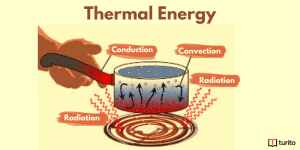Friction
Have you ever wondered why it is difficult to move an object from one place to another by pushing or pulling them over the surface of another body/object? Or have you ever tried to find out why we slip when walking on a wet floor?
The answer to all these questions is simple; these are all due to friction. So, then how can we define friction?
Friction is that force that opposes the relative motion between two objects trying to slide over each other. Now you may think that friction is an unnecessary force, but the fact is that it is a necessary evil. Even though it opposes motion and causes wear and tear on materials, without friction, we won’t be able to walk, drive, or write. So, friction is a friend and foe. There are mainly two types of friction,
- Sliding friction is the force that restricts the motion of a body sliding on a surface.
- Rolling friction is the force that restricts the movement of a body rolling over a surface.
This article will discuss in detail what is rolling friction with the relevant examples of rolling friction.
Rolling Friction
When a body, say a wheel or a ball, is placed on a surface, the sliding friction between the body and the surface restricts the body’s movement. But when a small force or torque is applied to the body, the sliding friction prevents the body from sliding, and the body starts rolling. Rolling friction can be defined as a force that opposes the rolling motion of an object over a surface. When a body starts rotational motion, a series of things happen. Following are the major things that happen when the rolling of a body starts,
- The object is deformed at the point of contact. It is general knowledge that deformation happens when pressure is applied to a surface. Likewise, when a wheel is placed on a surface, it exerts pressure on the surface and vice-versa.
- Surface Irregularities. The wheel and the surface at which it is placed are not perfectly smooth. It has irregularities. The roughness opposes the motion of the wheel.
- Due to the fore-said points, a motion is initiated below the surface.
When the deformation happens, there is a dissipation of energy. The major cause of rolling friction is that the deformation energy is more than the energy required to regain the original shape. For example, if a hard ball rolls over a leveled surface, the ball is somewhat flattened at the point of contact with the surface.
An elastic deformation or compression is caused as a result of this, and this, in turn, hinders the motion. This happens because the internal losses of the substances are not compensated as the objects spring back to their normal shape in the next session. Also, there is a constant need for energy to overcome the force that keeps two surfaces clung due to the force of adhesion.
Defining Factors of Rolling Friction
- The nature of the rolling object
The roughness or smoothness of the body is an important factor that affects the amount of friction. The rougher the surface, the more friction. If the ball that rolls over a surface is smooth, it will move with less resistance; if it is rough, its movement will be highly restricted.
- The quality of the surface on which the body rolls
Just as with the quality of the sliding body, if the surface is smooth, friction will be low, and if it is rough, friction will be more.
- Load
- As the load increases, the friction also increases.
- Diameter of the rolling object
The bigger the diameter, the smaller the friction.
- Area of the rolling body
If the surface area is more, the point of contact will also be more. This will, in turn, result in more friction.
Coefficient of Rolling Friction Definition
The coefficient of the rolling friction can be determined by the ratio of the rolling friction force and the body’s total weight.
Fr= 𝜇rW
Fr = the force of the rolling friction
𝜇r= the coefficient of the rolling friction
W= total weight of the body
Factors Affecting the Coefficient of Rolling Friction
- The shape of the wheel or the round surface.
- The nature and type of the surface on which the wheel is moving.
- The diameter of the wheel
- The area of the curved surface
- Speed of the wheel
- The material by which the wheel is made.
- Amount of pressure on the wheel
- Deformation of the surface or wheel
- The shape of the tread on the tires.
Laws of Rolling Friction
There are three main laws for rolling friction.
Law 1
As the smoothness of the surface increases, the rolling friction decreases.
Law 2
Rolling friction is directly proportional to the load. As the load increases, the rolling friction increases, and as the load decreases, the rolling friction decreases.
Law 3
Rolling friction is inversely proportional to the radius of the rolling body. When the radius increases, friction decreases, and when the radius decreases, friction increases.
Now let us look more into the examples of rolling friction.
Real-Life Examples of Rolling friction
- Rolling of Basketball: A basketball rolling on a field will eventually rest because of the rolling friction.
- Another example of rolling friction is the fuel consumption of a bike with wider tires is more due to rolling friction.
- The ball moving over a field will go a much shorter distance than a ball rolling over a marble floor because the marble floor offers low friction compared to the field. This is also a good example of rolling friction.
- The heavy-duty truck gets greater mileage when the treads on the wheel wear off because, in this scenario, there is low resistance to the motion. This is an evident example of rolling friction.
- One of the major examples of rolling friction is the roller skater. Since the surface-to-wheel contact is more for roller skaters, it has more rolling friction than rollerblades.
- The thicker tires will help slow down the bike as it has more surface-to-wheel contact, which offers more friction.
- When a vehicle is driven on a muddy surface(smooth surface), a plowing action is observed as sliding friction, in this case, is less. Similarly, riding a bicycle with flat tires is hard because the rolling friction is more in this case.
Note: Rolling friction is a weak force. Also, the sliding friction coefficients are 100 to 1000 times larger than the rolling friction coefficients for the same materials. This is mainly because the point of contact is more in sliding than that rolling friction. The more the surface area, the more friction.
Difference Between Rolling Friction and Sliding Friction
| Rolling Resistance/Friction | Sliding Friction/ Resistance |
| Occurs when a ball or a wheel rolls on a surface | The frictional force between two surfaces when they slide each other. |
| Cause: surface deformation during rolling | Due to the interlocking of the microscopic surface. |
| It depends on the geometry of the object, the weight of the object, and the surface area of the contact. | It depends on the smoothness of the surface and the weight of the object. |
Conclusion
There are pros and cons to friction that are equally relevant. We can never say whether the advantages outweigh the disadvantages or vice-versa. Friction helps us to walk and drive on the road safely. And it is the friction that helps us to write on paper. It is also why your car stays standing still when you don’t accelerate.
In contrast to all the pros, friction causes wear and tear on machinery. It also causes a loss of energy in the form of heat. Therefore, we can not eliminate friction as it helps us in many ways, but we should also keep it in check to minimize energy loss and protect our machinery.
Rolling friction definition can be stated as rolling friction is a force that opposes the motion of a rolling body, a wheel, or a ball, over a surface. Many detrimental factors affect the degree of rolling friction. There are merits and demerits to rolling friction which have been made clear through the examples of rolling friction. Though rolling friction is weak, it is very helpful in daily life.
Frequently Asked Questions (FAQs)
1. What is rolling friction?
Rolling friction can be defined as the force that limits the motion of an object, such as a wheel or a ball rolling over a surface. It can be represented as follows,
Fr = 𝜇rW
Fr = the force of the rolling friction
𝜇r = the coefficient of the rolling friction
W= total weight of the body
2. What are the factors affecting rolling friction?
There are several factors affecting the rolling friction. Some of them are listed below.
- The smoothness of the rolling body.
- The quality of the rolling surface
- Deformation of the surfaces.
- The initial speed of the wheel or body.
- Load.
- The radius of the objects that roll.
3. Give some examples of rolling friction.
Rolling friction is very useful in our daily lives. There are a lot of examples of rolling friction, and a few are listed below.
- The bikes with broader tires will consume more fuel due to the rolling friction.
- The roller skater has more surface-to-wheel contact, resulting in more rolling friction than rollerblades.
- A basketball rolling on a field gradually ceases motion due to the rolling friction.
4. What is meant by static friction?
An object remains stationary due to static friction
Friction is experienced when individuals attempt to move a stationary object on a surface without actually causing any relative motion between the body and the surface.

Relevant Articles
Understanding Thermal Energy: What It Is and How It Works
Thermal energy is essential to our daily lives, from warming …
Understanding Thermal Energy: What It Is and How It Works Read More »
Read More >>Avogadro’s Number: Meaning, Importance, and More
Introduction The concept of measuring the microscopic particles that make …
Avogadro’s Number: Meaning, Importance, and More Read More »
Read More >>Kinetic Friction – Definition, Laws, Types
Kinetic Friction Kinetic force is a force acting between two …
Kinetic Friction – Definition, Laws, Types Read More »
Read More >>




















Comments: